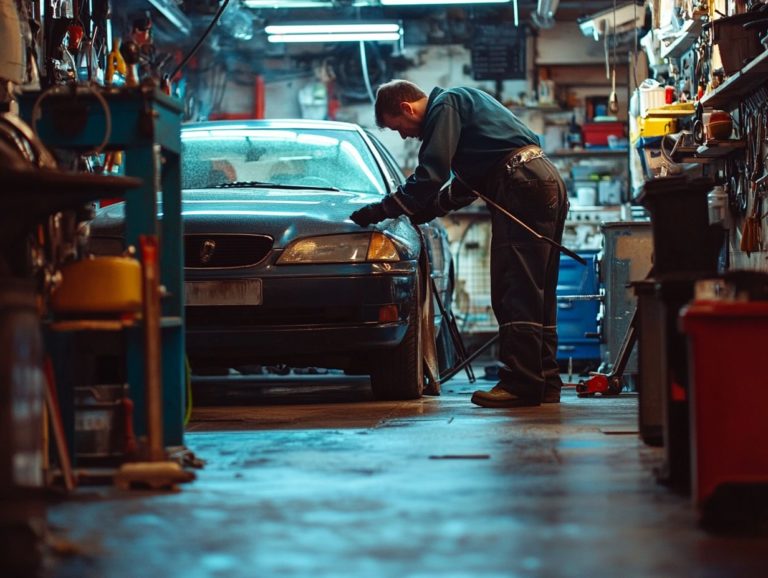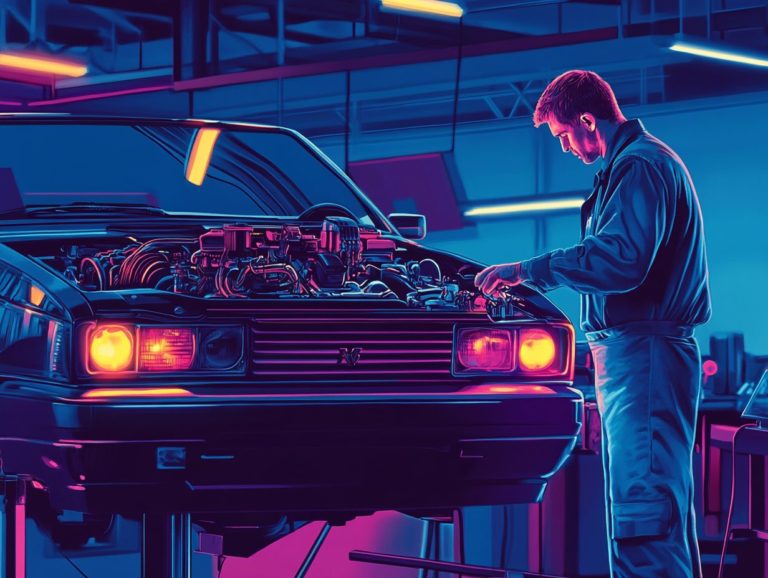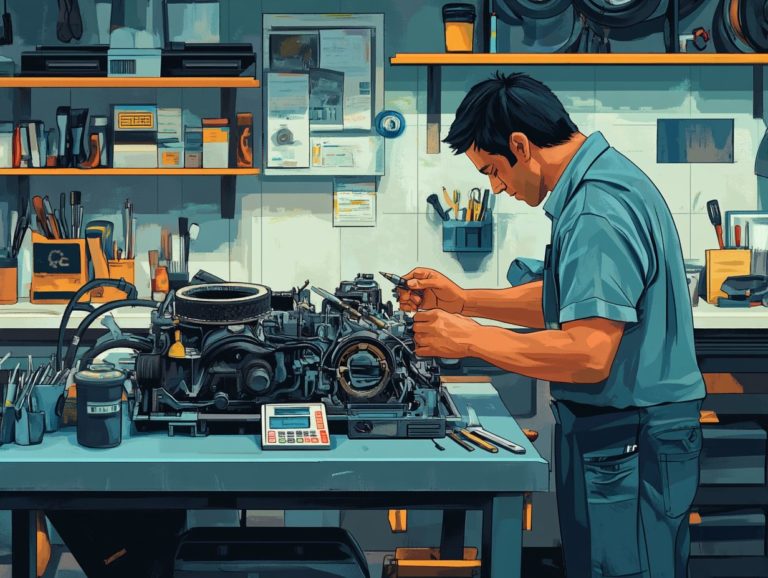5 Tips for Maintaining Your Car’s Suspension
Your car’s suspension system is vital for a smooth and safe driving experience. Neglecting it can lead to significant issues that compromise your vehicle’s performance and your safety on the road.
Here are five essential tips for maintaining your suspension system, ranging from regular inspections to steering clear of overloading your vehicle.
You ll explore the importance of your suspension, recognize the signs of wear, and receive valuable advice on prolonging its lifespan. Discover how to ensure your ride remains comfortable and your vehicle stays in peak condition!
Contents
- Key Takeaways:
- 1. Regularly Inspect Your Suspension System
- 2. Check and Replace Worn-Out Parts
- 3. Avoid Overloading Your Vehicle
- 4. Drive Carefully on Rough Roads
- 5. Get Your Suspension System Professionally Serviced
- What Is a Car Suspension System and Why Is It Important?
- Frequently Asked Questions
- What does a car’s suspension do?
- Why is it important to maintain your car’s suspension?
- What are some signs that your car’s suspension needs maintenance?
- What are some tips for maintaining your car’s suspension?
- How often should you have your car’s suspension checked?
- Can I maintain my car’s suspension on my own?
Key Takeaways:
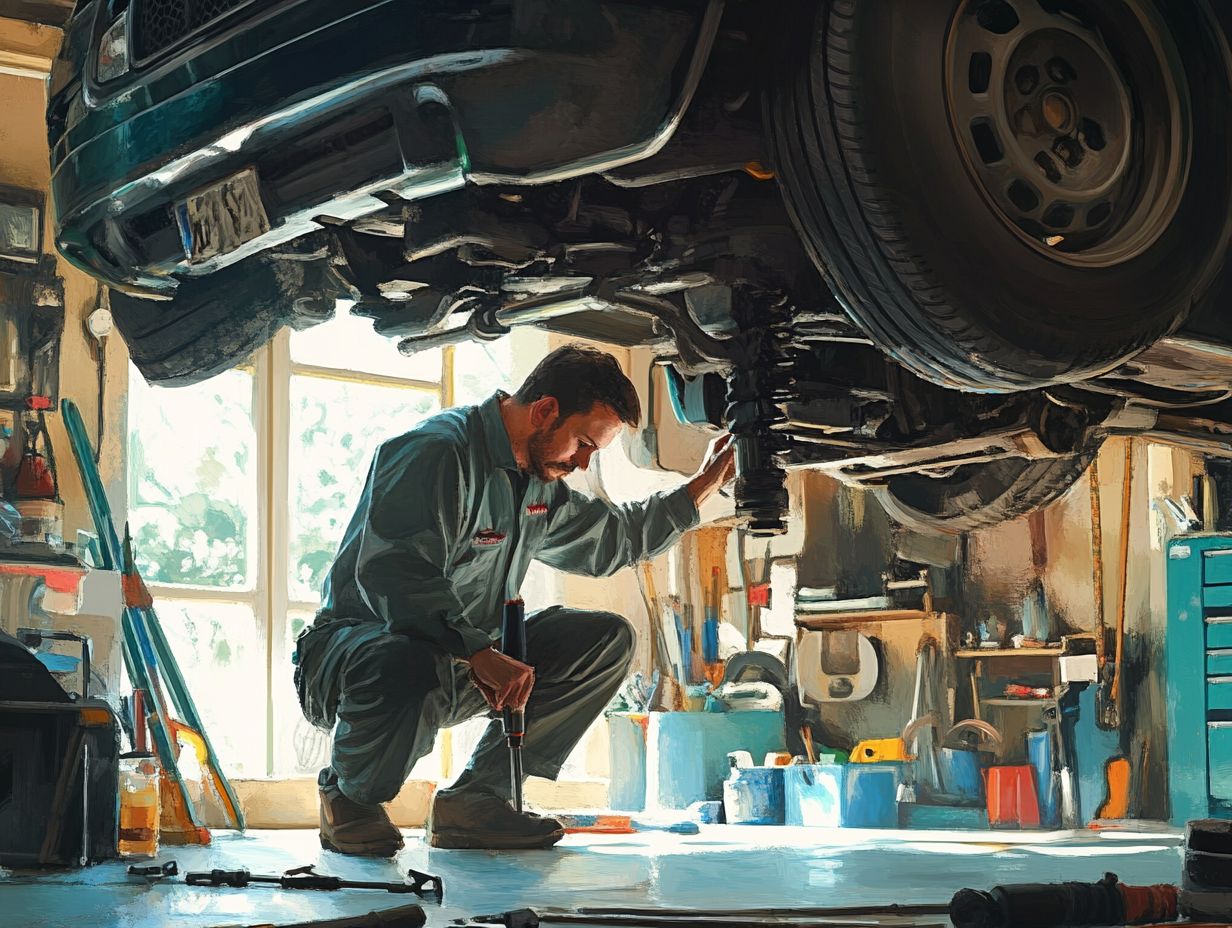
- Regularly inspecting your suspension system can prevent costly repairs and ensure a smooth ride.
- Check and replace worn-out parts to maintain the performance and safety of your suspension system.
- Avoid overloading your vehicle to prevent putting unnecessary strain on your suspension system.
1. Regularly Inspect Your Suspension System
Regularly inspecting your vehicle’s suspension system is essential for a smooth ride and optimal handling. This system, made up of components like shock absorbers, struts, coil springs, and leaf springs, plays a crucial role in absorbing road irregularities and keeping your tires connected to the road.
Visit service centers like Tires Plus for routine inspections to catch issues early, preventing costly repairs and enhancing your vehicle s performance over time.
Maintaining an effective suspension system isn t just about comfort; it s also about safety. Components like bushings and alignment significantly influence how your vehicle responds during turns and stops. Regular checks can prevent uneven wear on your tires and steering parts, avoiding more serious problems down the line.
Stay safe on the road by keeping a close eye on your tire pressure. Proper inflation greatly impacts handling and tire longevity.
Check the tread depth to understand your tires’ overall health, guiding you toward necessary replacements before they pose a safety risk. By prioritizing these inspections, you can ensure a more reliable and pleasurable driving experience.
2. Check and Replace Worn-Out Parts
Checking and replacing worn-out suspension parts, such as shock absorbers, struts, coil springs, and leaf springs, is essential for maintaining optimal vehicle handling and ensuring a smooth driving experience.
These components bear significant stress over time and may show signs like leaking fluid, excessive bounce, or uneven tire wear. Timely replacement of these parts enhances ride comfort, improves steering response, and ensures overall stability. Ignoring these warning signs can lead to further damage, increased tire wear, and compromised safety.
By promptly addressing the deterioration of suspension components, you can maintain a balanced suspension system, ultimately contributing to better vehicle performance and a safer driving experience across various terrains.
3. Avoid Overloading Your Vehicle
Overloading your vehicle can significantly impact the suspension system, leading to accelerated wear and compromised handling that could jeopardize your driving experience.
When the suspension bears excessive weight, you may notice reduced responsiveness and stability, resulting in longer stopping distances and decreased control on the road. Key components like springs, shock absorbers, and bushings are particularly susceptible to damage under these conditions.
To prevent these detrimental effects, it’s crucial to adhere to the manufacturer’s recommended load limits and regularly inspect your suspension for signs of wear. Engaging in basic maintenance practices, such as checking tire pressure and alignment, also plays a vital role in ensuring your suspension system operates optimally, enhancing both safety and performance.
Don’t wait schedule your inspection today to keep your vehicle in top shape!
4. Drive Carefully on Rough Roads
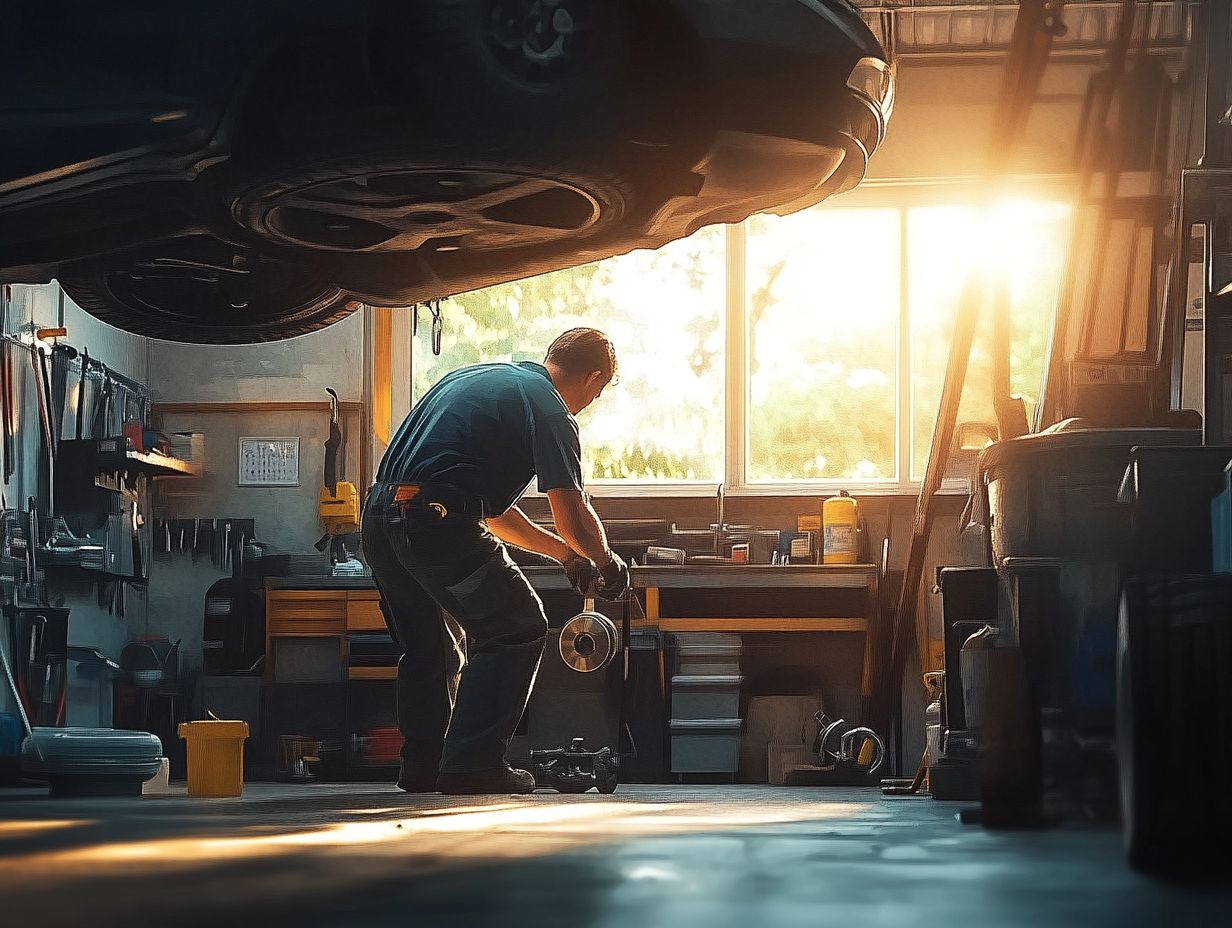
Driving carefully on rough roads is essential for preserving your suspension system. It also enhances your overall driving experience.
Excessive jolts can lead to premature wear and tear that you definitely want to avoid. Navigating those rough dirt roads, poorly maintained city streets, or even off-road trails can put immense strain on your vehicle’s suspension components, which are the parts that help your vehicle absorb shocks.
To mitigate this risk, it’s crucial for you to adjust your driving habits by:
- Reducing speed on uneven surfaces,
- Avoiding potholes whenever possible,
- Maintaining proper tire pressure to ensure better grip and support.
Don t wait! Regular vehicle inspections can catch early signs of wear, keeping your suspension in optimal condition even in challenging driving scenarios.
5. Get Your Suspension System Professionally Serviced
Having your suspension system professionally serviced at a reputable automotive service center, like Tires Plus, is essential for maintaining better control of your vehicle and ensuring a smooth ride over time.
These services not only enhance your driving comfort. They also significantly boost safety on the road. A comprehensive professional inspection evaluates all key suspension components, identifying any wear or damage before it escalates into a serious problem.
Proper lubrication of joints can reduce friction, promoting both longevity and efficiency. Make sure your wheels are aligned! This simple step can prevent uneven tire wear and keep you safe on the road.
Regular maintenance checks are vital, as they not only preserve the performance of your suspension system but also extend the lifespan of your vehicle, saving you from costly repairs down the line.
What Is a Car Suspension System and Why Is It Important?
A car suspension system is an essential component of your vehicle, meticulously designed to deliver a smooth ride by absorbing shocks and ensuring optimal handling.
This directly impacts your driving safety and comfort. This sophisticated system includes elements like shock absorbers, coil springs, struts, and leaf springs, each contributing significantly to dissipating energy from road irregularities.
These components work in perfect harmony to minimize body roll during cornering, reduce vibrations, and bolster stability when accelerating or braking. The shock absorbers, for example, expertly control the rebound of the springs, managing how your vehicle responds to bumps and dips on the road.
On the other hand, the coil springs support the weight of the vehicle while allowing for vertical movement, which is critical for maintaining control and comfort. This intricate balance among all parts not only elevates passenger comfort but significantly enhances safety as well.
A well-functioning suspension system helps maintain tire traction and alignment, ultimately leading to a confident and enjoyable driving experience.
What Are the Signs of a Worn Out Suspension System?
Recognizing the signs of a worn-out suspension system is crucial for you to maintain optimal vehicle handling. This can prevent further damage which could lead to uneven tire wear and impact overall driving performance.
You should stay alert to several common indicators that suggest suspension troubles. If you notice excessive bouncing when driving over bumps, find it difficult to steer or keep a straight line, or hear unusual noises like clunking or squeaking, these could be red flags signaling impending issues.
Make it a habit to conduct routine inspections. This should include checking the shock absorbers for leaks and ensuring that all components are securely fastened.
Additionally, maintaining proper tire pressure and alignment will support the longevity of your suspension system, helping you enjoy a smoother ride and improved overall vehicle performance.
When Should You Check Your Suspension System?
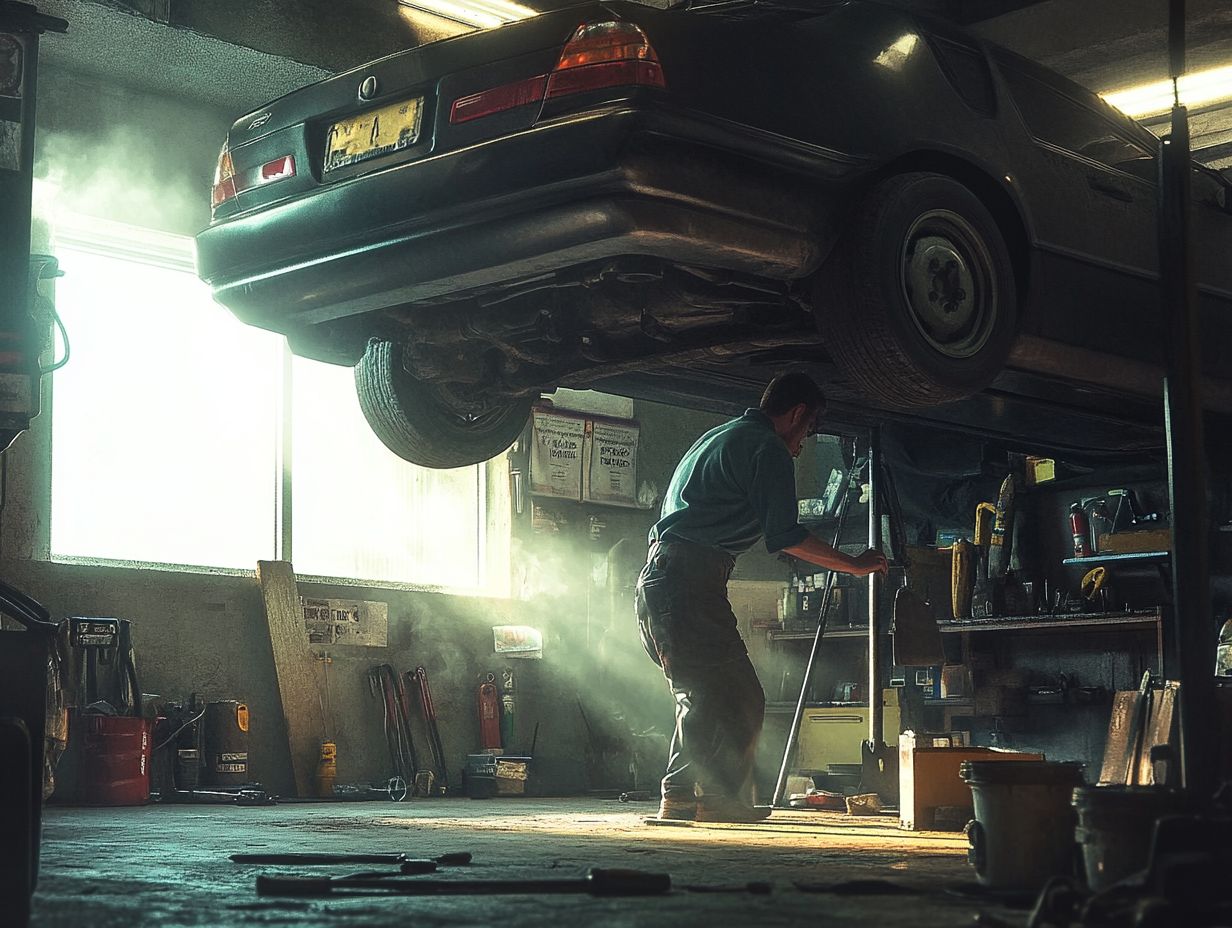
Check your suspension system regularly. Aim for every 50,000 miles or during routine inspections at trusted service centers like Tires Plus.
This way, you can be confident that all components are functioning at their best.
Several factors influence how often you should check your suspension. Your driving conditions play a critical role.
Navigating rough roads, dodging potholes, or enduring constant stop-and-go traffic can accelerate wear and tear, making more frequent assessments a smart move.
Additionally, the load your vehicle carries impacts suspension performance. If you frequently drive with a heavy load, inspect your suspension before reaching 50,000 miles.
Incorporating these checks into your regular maintenance schedule is not just a precaution it s a savvy strategy to ensure safety and extend the lifespan of your suspension system.
Fixing potential issues early can save you from more significant headaches down the road.
What Are the Different Types of Suspension Systems?
There are several types of suspension systems found in vehicles, including coil springs, leaf springs, shock absorbers, and struts, each meticulously crafted to deliver specific handling characteristics and ride quality.
By understanding the intricacies of these systems, you can significantly enhance your appreciation for how they impact both performance and comfort on the road.
For example, coil springs are often the go-to choice in modern cars for their exceptional ability to deliver a smoother ride while maintaining superior control during turns.
Leaf springs, commonly utilized in trucks and larger vehicles, excel in ability to carry heavy loads, making them the ideal solution for heavy-duty applications.
On the other hand, shock absorbers and struts play a crucial role in dampening road imperfections, ensuring that your vehicle remains stable across various terrains.
Each suspension system offers a distinctive blend of advantages, ultimately contributing to an optimized driving experience that expertly balances performance with ride comfort.
What Are the Common Causes of Suspension System Damage?
Common culprits behind suspension system damage include poor maintenance, overloading, rough driving conditions, and neglecting to address signs of wear.
Each of these factors can lead to uneven tire wear and compromised vehicle handling.
When maintenance takes a backseat, it often means that fluids aren t changed regularly or fittings aren t lubricated, resulting in parts that wear out at an alarming rate.
Overloading your vehicle beyond its recommended capacity places undue strain on the suspension, creating a ticking time bomb for outright failure down the road.
Navigating rough terrains can also introduce shocks that prematurely wear down parts, while ignoring those pesky squeaks, vibrations, or an uneven ride can set the stage for even more severe damage.
By committing to regular inspections, sticking to weight limits, adjusting your driving habits, and promptly addressing any symptoms of wear, you can significantly enhance the longevity and performance of your suspension system. Additionally, knowing 5 tips for quick common car repairs can further help in maintaining your vehicle’s overall condition.
How Can You Extend the Lifespan of Your Suspension System?
To extend the lifespan of your suspension system, commit to regular maintenance. Lubricate moving parts and conduct inspections frequently.
Use high-quality grease made for suspension systems to ensure the best performance. Don t forget to check your tire pressure; under-inflated tires can harm your suspension and lead to premature wear.
Schedule regular automotive inspections every few thousand miles to catch potential issues early. During these checks, examine components like shock absorbers and bushings for any damage. Early intervention can save you from costly repairs in the future.
By adopting these best practices, you can maintain your car’s suspension and ensure a smooth ride while preserving the integrity of your vehicle’s suspension system.
Frequently Asked Questions
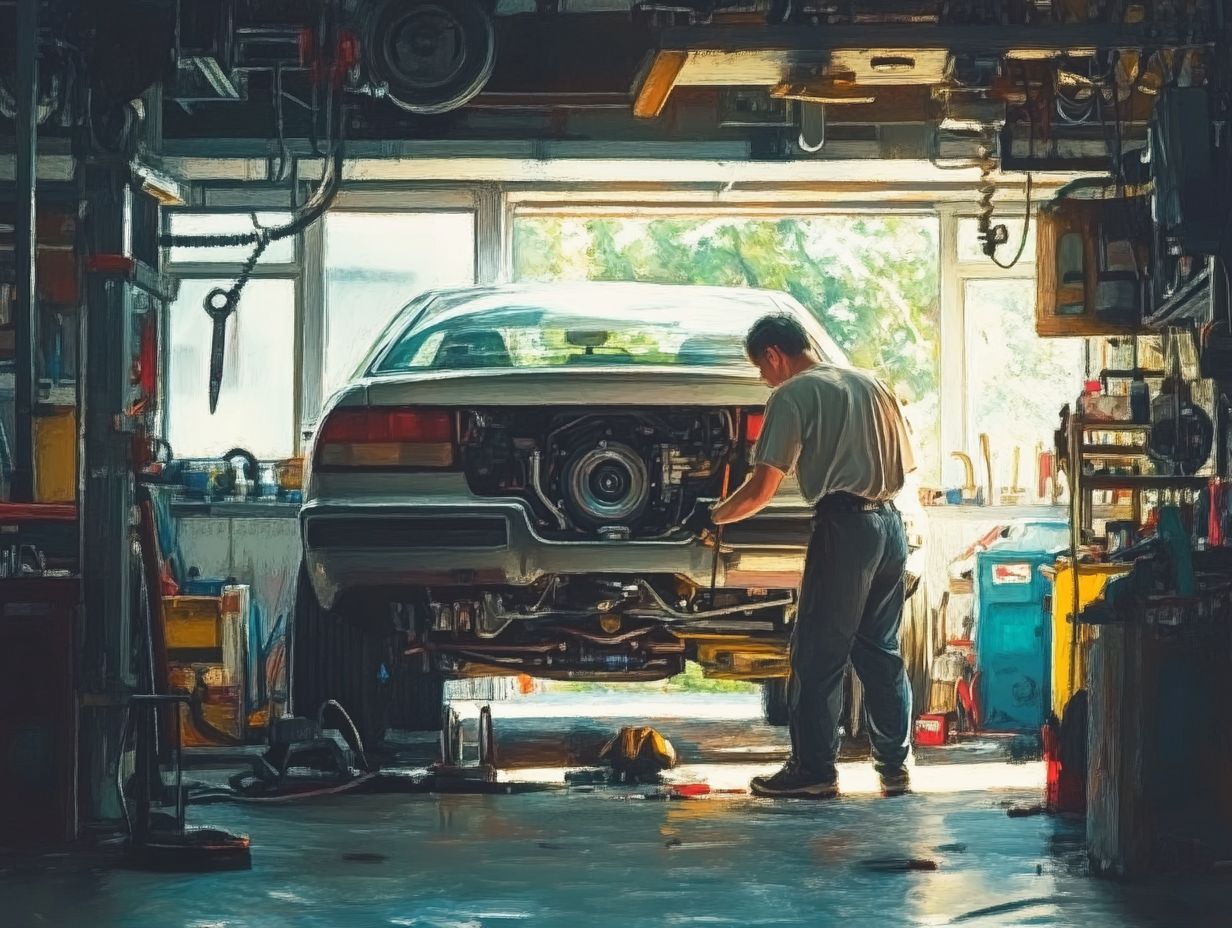
What does a car’s suspension do?
A car’s suspension absorbs shocks and vibrations from the road, allowing for a smooth and comfortable ride. It also aids in steering and handling, ensuring that the tires maintain contact with the road at all times.
Why is it important to maintain your car’s suspension?
Maintaining your car’s suspension is crucial for your safety and the overall health of your vehicle. A well-maintained suspension ensures a smooth ride, improves handling, and prevents costly damage to other components.
What are some signs that your car’s suspension needs maintenance?
Common signs that your car’s suspension may need maintenance include uneven tire wear, a bumpy ride, difficulty steering, and unusual noises like squeaking or clunking.
What are some tips for maintaining your car’s suspension?
First, regularly check your tire pressure and ensure it is at the recommended level. Second, inspect your shocks and struts for leaks or damage and replace them if necessary. Third, have your alignment checked and adjusted as needed.
Avoid driving on rough roads whenever possible, and follow the manufacturer’s recommended maintenance schedule for your car’s suspension.
How often should you have your car’s suspension checked?
Check your car’s suspension at least once a year or every 12,000 miles, whichever comes first. If you notice any of the earlier signs, have it checked immediately to avoid further damage and ensure your safety.
Can I maintain my car’s suspension on my own?
While some basic tasks, like checking tire pressure and inspecting for leaks, can be done at home, it s best to have a professional mechanic handle more complex maintenance. They have the tools and expertise to ensure your suspension is properly maintained.

